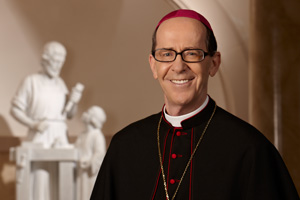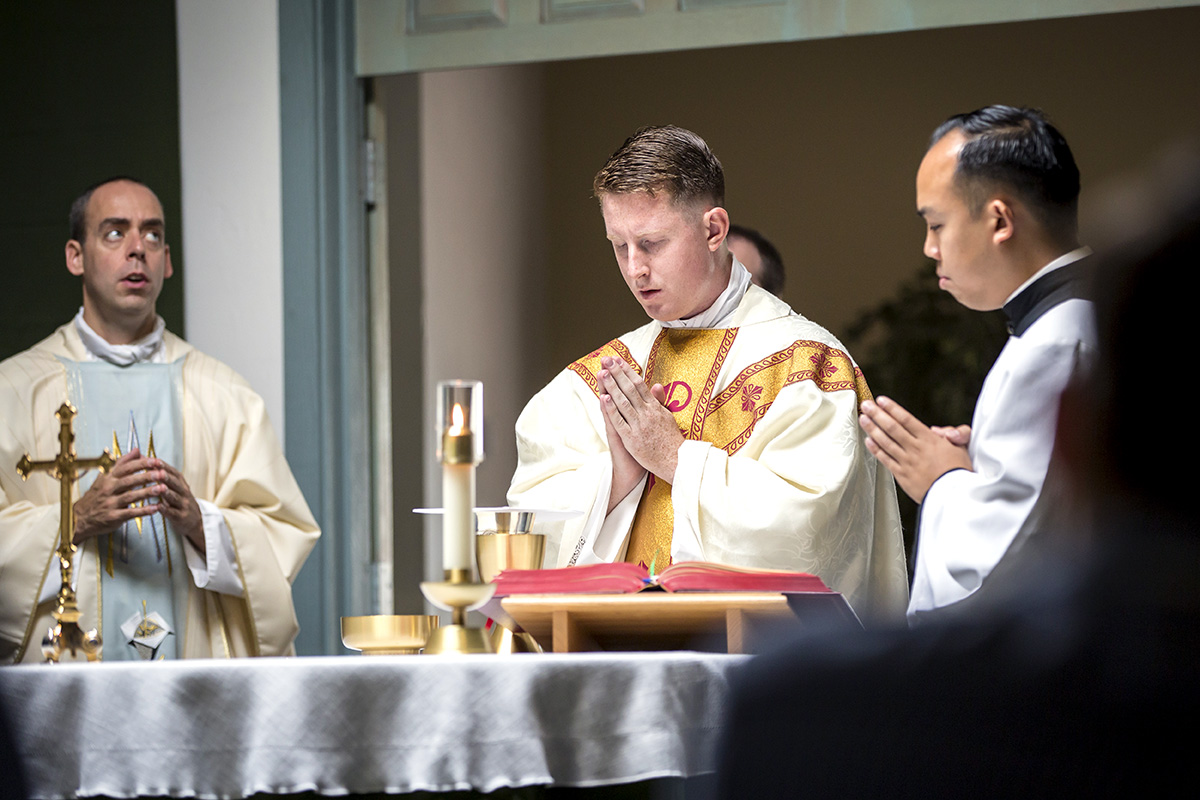Holy Yet Needing Purification
Fourth in a Series
In this series, I have been addressing certain aspects of the scandals that the Church has suffered over the past 70 years. Having addressed some of the causes of the scandals and certain questions about the priesthood, I would like now to look at the renewal that we are seeing in priestly formation. This is good news since much of the scandal that has so hurt the Church had its beginnings in deficient seminary formation.
If one were to go to school to be a pilot or accountant, the preparation would emphasize the technical skills needed for such occupations. If one were studying to be a teacher, there would be emphasis on the ability to interact with students and best foster their growth. For priests, to live the calling to love God and to serve His people in persona Christi, a formation is required that seeks to address the man’s growth in all aspects of his life.
Priestly Formation Through the Ages

While the formation of the clergy in the early Church took the form of an apprenticeship, it grew to include more education at the monasteries and cathedral schools in the Middle Ages. Then, at the Council of Trent in the mid-16th century, the Church called for seminary houses where men would be instructed especially in philosophy and theology in order to serve well as priests. Many such seminaries were built in our country as the Catholic population grew rapidly in the late 19th and early 20th centuries.
The Second Vatican Council, in “Optatam Totius (Decree on Priestly Training),” stated that “the whole training of the students should have as its object to make them true shepherds of souls after the example of our Lord Jesus Christ, teacher, priest and shepherd” (4).
This was further developed by St. Paul VI and St. John Paul II as they called for synods on the priesthood. It was after one of these synods that St. John Paul II gave the Church his post-synodal apostolic exhortation “Pastores Dabo Vobis (I will give you Shepherds)” in 1992, which set the course for the renewal and purification of our approach in forming future priests. Herein, the Holy Father outlined in detail the four pillars of formation for the priesthood.
Four Pillars of Formation
The first pillar is human formation: This is of foundational importance as “the priest is to be a bridge and not an obstacle for others in their meeting with Jesus Christ” (PDV 43). Human formation involves mentoring and guidance toward all that augments the man’s personality and moral character, such as self-mastery, prudence, affability, relatability, chastity, affective maturity, good stewardship and docility to life-long growth in virtue.
The next pillar is spiritual formation: “For every priest his spiritual formation is the core which unifies and gives life to his being a priest and his acting as a priest” (PDV 45). Spiritual formation leads a seminarian to discern the Church’s calling for him “to live in intimate and unceasing union with God the Father through His Son, Jesus Christ, in the Holy Spirit” (OT 8). The formation happens with spiritual guidance at the seminary and God’s grace through liturgy, Scripture, the Sacraments and the devotional life.
Next is the pillar of intellectual formation: “For the salvation of their brothers and sisters, they should seek an ever-deeper knowledge of the divine mysteries” (PDV 51). Disciples are learners. The first task of intellectual formation is to acquire a personal knowledge of the Lord Jesus Christ, who is the fullness of God’s revelation and the one Teacher. This formation is directed at solid preparation for the teaching office of priests.
Finally, we have pastoral formation: Here St. John Paul II recalls that “the new evangelization needs new evangelizers, and these are the priests who are serious about living their priesthood as a specific path toward holiness” (PDV 82). A true “shepherd of souls” does this with and for Christ in the community as he lives the threefold mission to teach, sanctify and govern with compassion and missionary zeal those entrusted to his care. This formation is fostered as the seminarian engages in pastoral service in parishes, hospitals, schools, prisons and so forth.
The guidance of St. John Paul II in “Pastores Dabo Vobis” was a tremendous help for seminaries, putting specific criteria and policies in place that would protect us from the errors of the past. In our country, this teaching was distilled and implemented in our seminaries with our USCCB “Program for Priestly Formation” which addresses the concrete circumstances of our American communities and lays out standards for seminarians, along with the criteria to thoroughly assess and discern the ability of prospective seminarians to enter formation or to advance through the various stages.
Pope Benedict XVI and Pope Francis have continued this vision of “Pastores Dabo Vobis” and given further guidance for seminaries and bishops charged with this important work within the Church.
A New Generation and New Approaches
While such guidance from St. John Paul II and his successors has set the Church on a solid course, there have been new and helpful approaches to formation that have impacted our own diocese as we discern the needs of our time.
It is important to note that the young men who are now considering such a call have grown up in a vastly different society from that of the Baby Boomers or Gen Xers. The stability of family life, the cultural mores and the laws of our land are not the same as in the past. These young men have also grown up with the Internet, smart phones and tablets that have come with limited benefits and abundant dangers. Research has shown how this has affected their way of looking at the world, their work ethic, their self-confidence and even their level of happiness. There are many ways that formation, if it is going to ready a man to be a faithful, chaste, secure and holy spiritual father in the Church, must provide the experiences, healing and guidance that will address these concerns.
Seminary life cannot simply assume good personal health and human competence on the part of those applying today and only focus on the academics. Instead, a special focus is needed on human and spiritual formation. It is wonderful to see many seminaries making good use of faithful counselors that can augment the work of seminary personnel and spiritual directors. It is also a blessing to see seminaries working to ensure that men are receiving more hands-on guidance from priests and pastors and even living in parish households where the work of pastors can be more closely observed and shared.
Such approaches to the formation of young men discerning the priesthood ensure that the men are more known to the Church and to themselves.
The most recent (2016) Vatican guidance for the formation of seminarians, called the “Ratio Fundimentalis Institutionis Sacerdotalis (The Gift of the Priestly Vocation),” has called for this greater knowledge of each seminarian in two ways. First, there is encouragement of a propaedeutic or preparatory time in which a young man works on the basics of human and spiritual development that will allow him to better grow in his formation. There is also the encouragement of the pastoral year at the end of one’s formation in order to allow the local Church and the young man to come to even greater clarity in discernment as he experiences service in the context of parish life.
Nazareth House
Nazareth House
For updates on Nazareth House, text SEMINARIANS to 84576.
I wish to share with you now my discernment about a new approach to the formation of college-level seminarians in Phoenix and the foundation of a seminary here in our diocese. Nazareth House, in name and mission, reminds us of the hometown and household setting in which Jesus grew up. The Scriptures say that He “grew in wisdom and stature, and in favor with God and man” (Lk 2:52). It is our desire that Nazareth House, a seminary house of formation, will be a place where our seminarians share meals, household responsibilities, prayer and faith in Jesus Christ while completing two years of initial academic studies at a local college.
Finally, I am edified to see the attention and concern for the strong formation of our future priests by many of the laity. People like those of the Serra Club, who intercede for our seminarians and priests in a special way, are a tremendous example of this. In my next article, I will expand on what more we can do for the renewal of our Church and the clergy.






